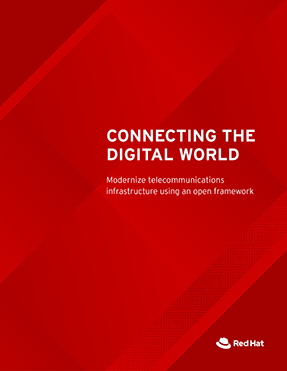What is 5G?
5G refers to the fifth generation of mobile networks. It’s designed to augment existing 4G LTE cellular networks or even replace them completely. Each generation is defined by several factors, like the technology used, the amount of time between sending and receiving a signal (latency), and the speed of data transmission over a network to connected devices. There is also a difference between public and private 5G. 5G networks promise gigabit speeds—or data transmission speeds of up to 10 Gbps. 5G service also vastly reduces latency and can expand coverage to remote areas.
But 5G is more of a blueprint because the supporting infrastructure is limited to a small number of areas. South Korea already performed a nationwide 5G rollout, and Japan plans to complete its integration before hosting the next Olympics. The United States’ Federal Communications Commission (FCC)—and other jurisdictions like Australia, China, and Europe—are all working with regional service providers to expand 5G coverage.
What can 5G do?
There are obvious advantages to 5G use as it relates to speed, latency, and bandwidth. Consumers will enjoy faster downloads, reduced social media buffering, 4K mobile phone games, as well as enhanced virtual reality experiences.
5G also has use cases well beyond consumers. This is the wireless technology that will enable the seemingly instantaneous transmission of enormous amounts of data, creating a nearly seamless connection between the digital and physical worlds.
Transportation
Using real-time connectivity, 5G will help traffic signals manage intersections more efficiently by detecting approaching cars. Wider access to 5G speeds will also better support edge devices optimized for 5G, like self-driving cars that pilot themselves and communicate with other cars.
Medicine
Physicians can use virtual reality to treat a patient in another location. Artificial intelligence (AI) combined with instant access to huge amounts of medical data will help medical staff make diagnoses and devise treatments more quickly and accurately.
Farming
By 2050, farmers will need to feed 9.8 billion people using the same amount of land that feeds 7.8 billion today. 5G can increase efficiency by guiding autonomous farm equipment, like tractors and harvesters, and operate drones to detect changes in plant health, soil quality, and moisture—and apply the exact amount of pesticide, water, or fertilizer needed.
Public services
5G can aid emergency services, like the 911 system in the U.S., by streamlining coordination of services, such as police, ambulance, and fire departments. Location information will be much more accurate, so first responders can pinpoint their destination, even in rural areas. Disaster response will be more efficient, identifying critical areas faster and providing more comprehensive assistance.
What about the other generations?
1G
This first generation of mobile networks emerged from Japan in the late 1970s, spreading to global use a few years later. 1G used analog data transmission, like AM/FM radio, which was readily accessible, but unreliable and insecure. The maximum speed was a little over 2 kbps (kilobits per second), just enough for just a few lines of text. As of 2018, the last existing 1G network continues to operate in Russia.
2G
Arriving in the early 1990s, 2G gave us digital voice transmission, short message service (SMS), and multimedia message service (MMS) texting. At speeds of up to 200 kbps, it was much faster than 1G, but still quite slow compared to today. Data was a little more secure, but sparse network coverage gave rise to expensive roaming charges and dropped calls.
3G
Arriving in the mid-2000s, 3G gave us the mobile internet, which helped to speed up the global adoption of smartphones. Data speeds increased dramatically to around 40 megabits per second (Mbps), more than 200 times that of 2G. Packet switching, along with general packet radio service (GPRS) helped achieve faster speeds that ushered in the age of the mobile internet.
4G
Coming onto the market around 2010, 4G is currently the mobile technology with the widest global use. It’s largely responsible for integrating smart devices into the very fabric of our lives. With average download speeds of up to 100 Mbps, 4G networks allow us to download high-definition video files, play fast-action 3-D generated games, stream music, virtual reality, and a host of other services.
What's the future of 5G?
Beyond 5G phones, imagine all kinds of 5G devices working together to create 5G homes. This is the future of 5G wireless networks. 5G technology may even generate US$13.2 trillion of goods and services—and create as many as 22.3 million jobs—by 2035.
What service providers offer 5G?
Samsung
Samsung’s 5G network solutions are being built on Red Hat OpenShift.
Verizon
Red Hat helped Verizon build a cloud-native 5G core.
Turkcell
Regional 5G leader created a unified cloud with Red Hat OpenStack®.
Ericsson
Ericsson partners with Red Hat to build solutions using OpenStack and containers.
Why is 5G important?
Every business relies on the telecommunications industry for internet access. 5G will provide advantages to many businesses, especially through network slicing (more on this below): data used for entertainment and communication will get a slice of the network, while critical data will have a separate, dedicated slice. In order to realize this update to our infrastructure the telecommunications industry is focusing on the transition to 5G. This ongoing 5G network transformation often depends on the virtualization of radio access networks (RAN) and increasingly assumes that this future is container-based and cloud native. For telecommunications companies RANs represent significant overall network expenses, perform intensive and complex processing, and now face rapidly increasing demand as more edge and 5G use cases emerge for customers.
But through the virtualization of network functions telecommunications companies and ISPs can simplify network operations and improve flexibility, availability, and efficiency—all while serving an increasing number of devices and bandwidth-hungry applications. This means greater speed and flexibility for industries that rely on ISPs; which is all of them.

